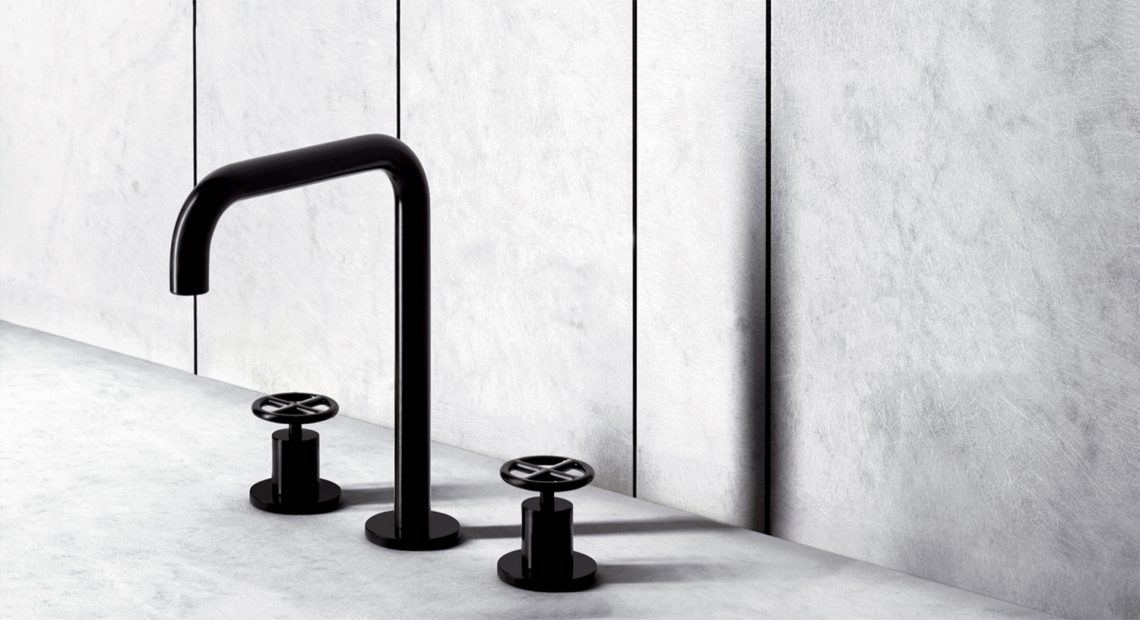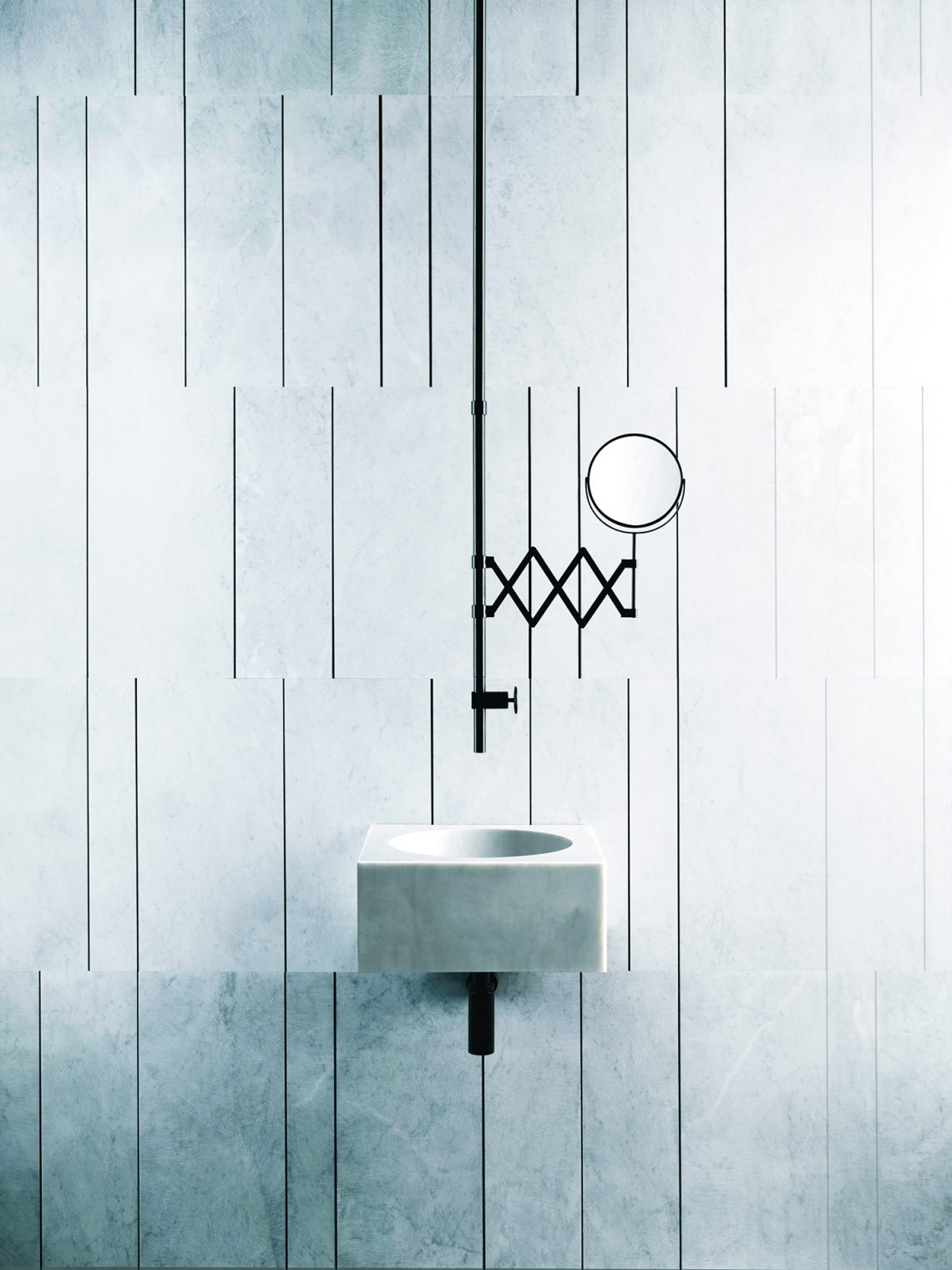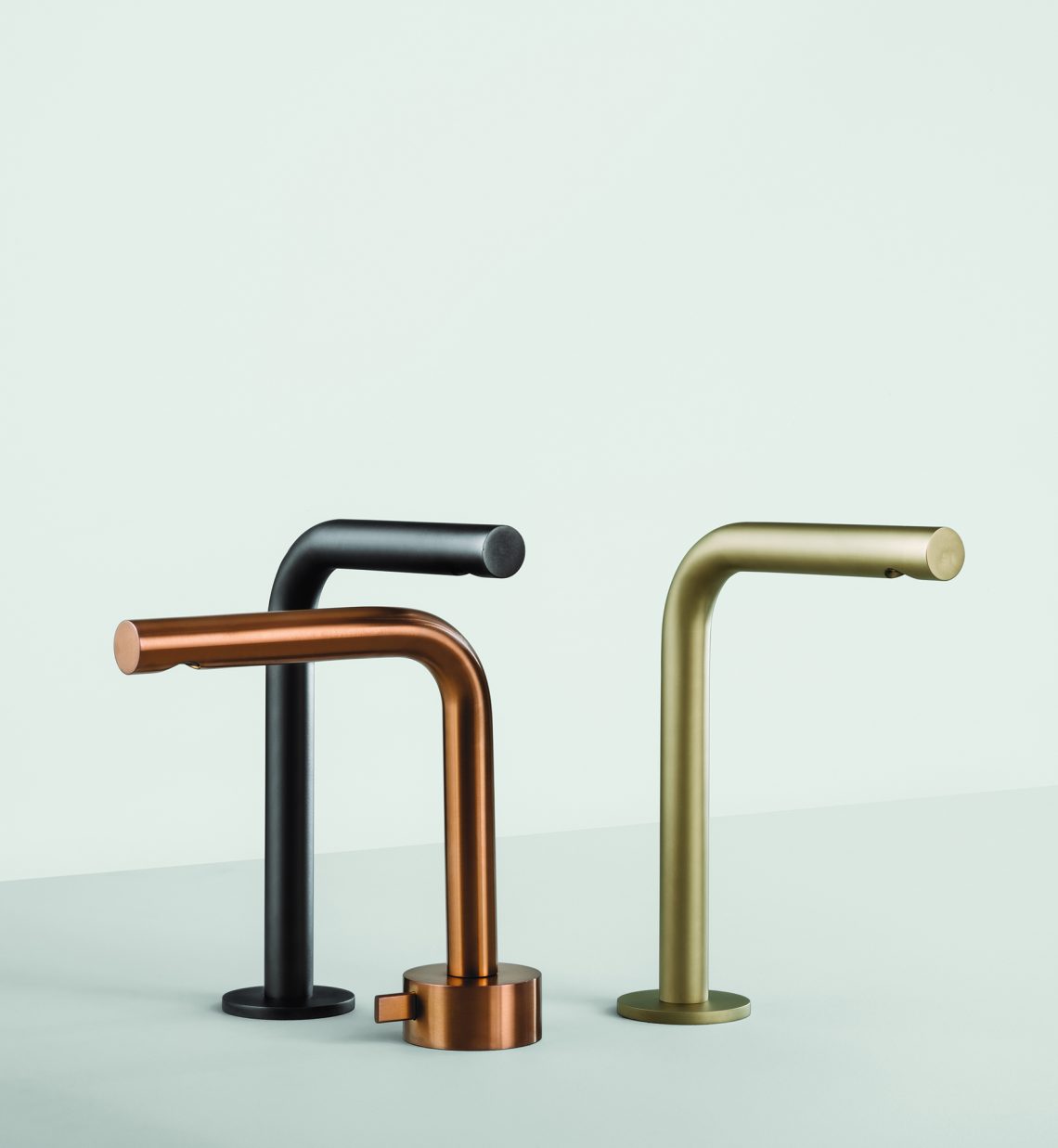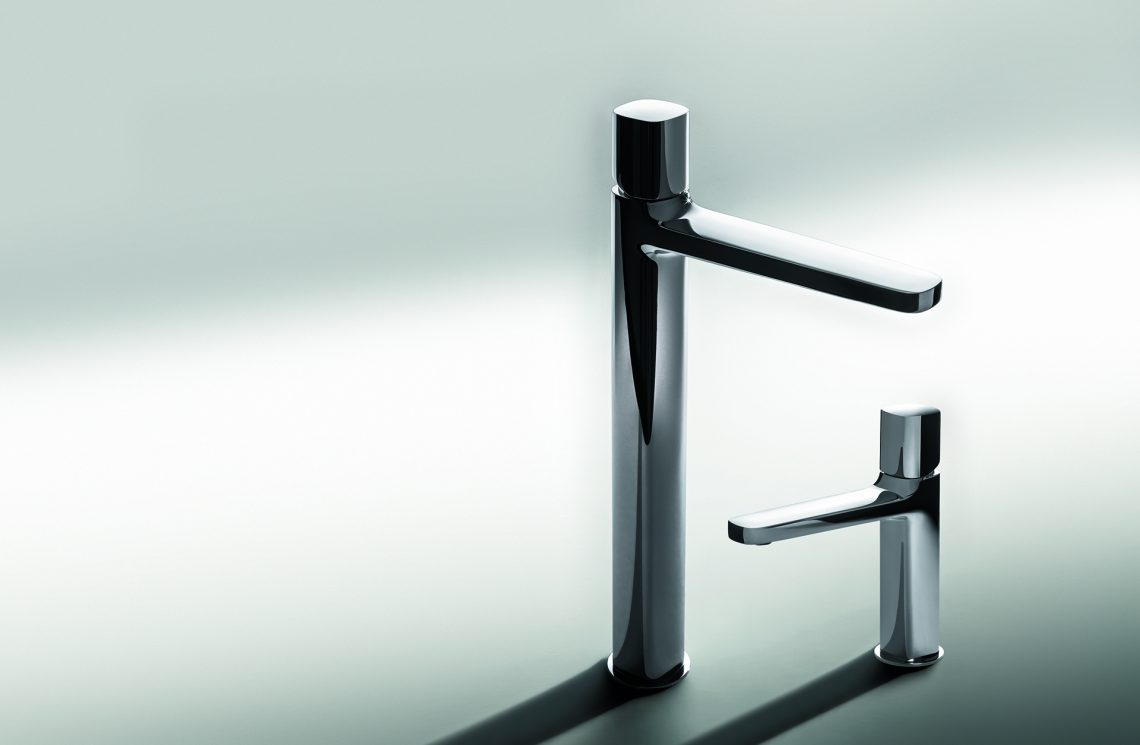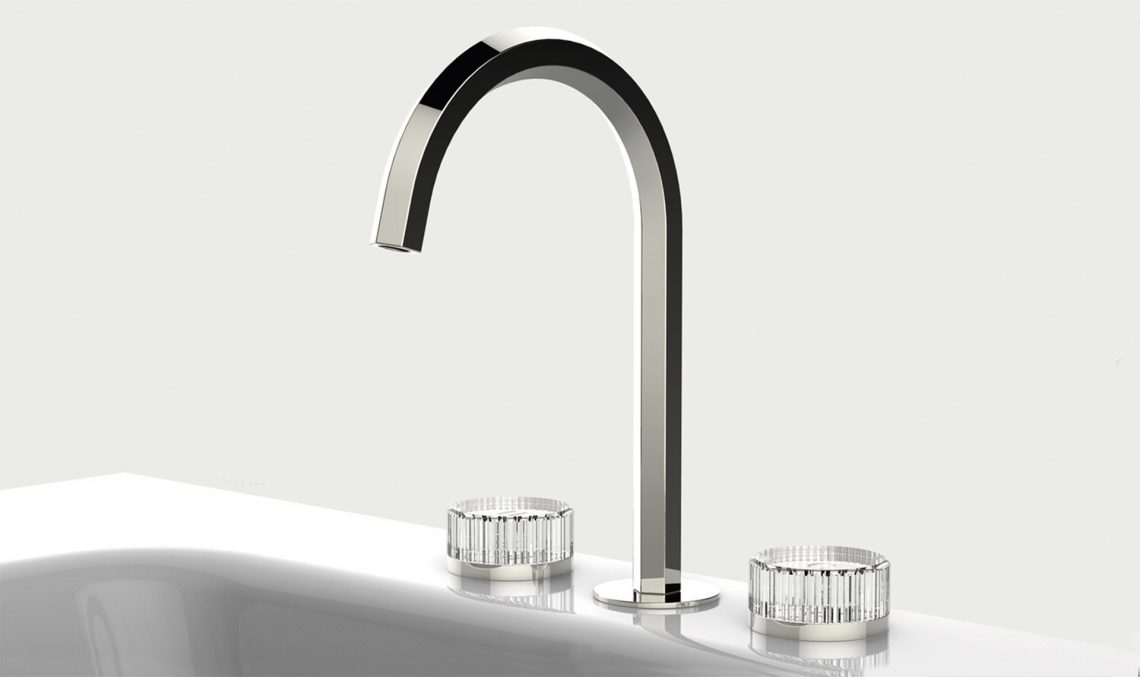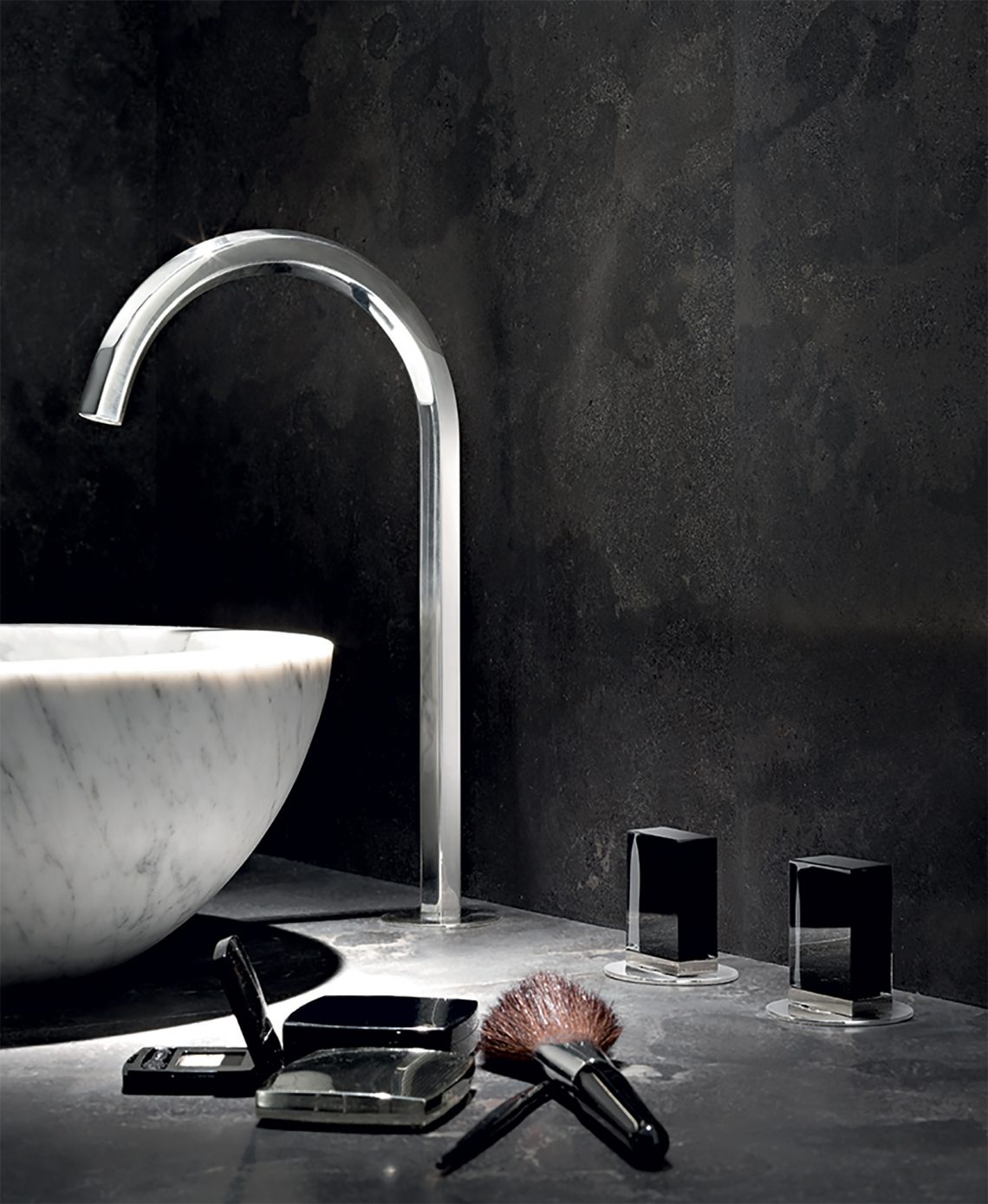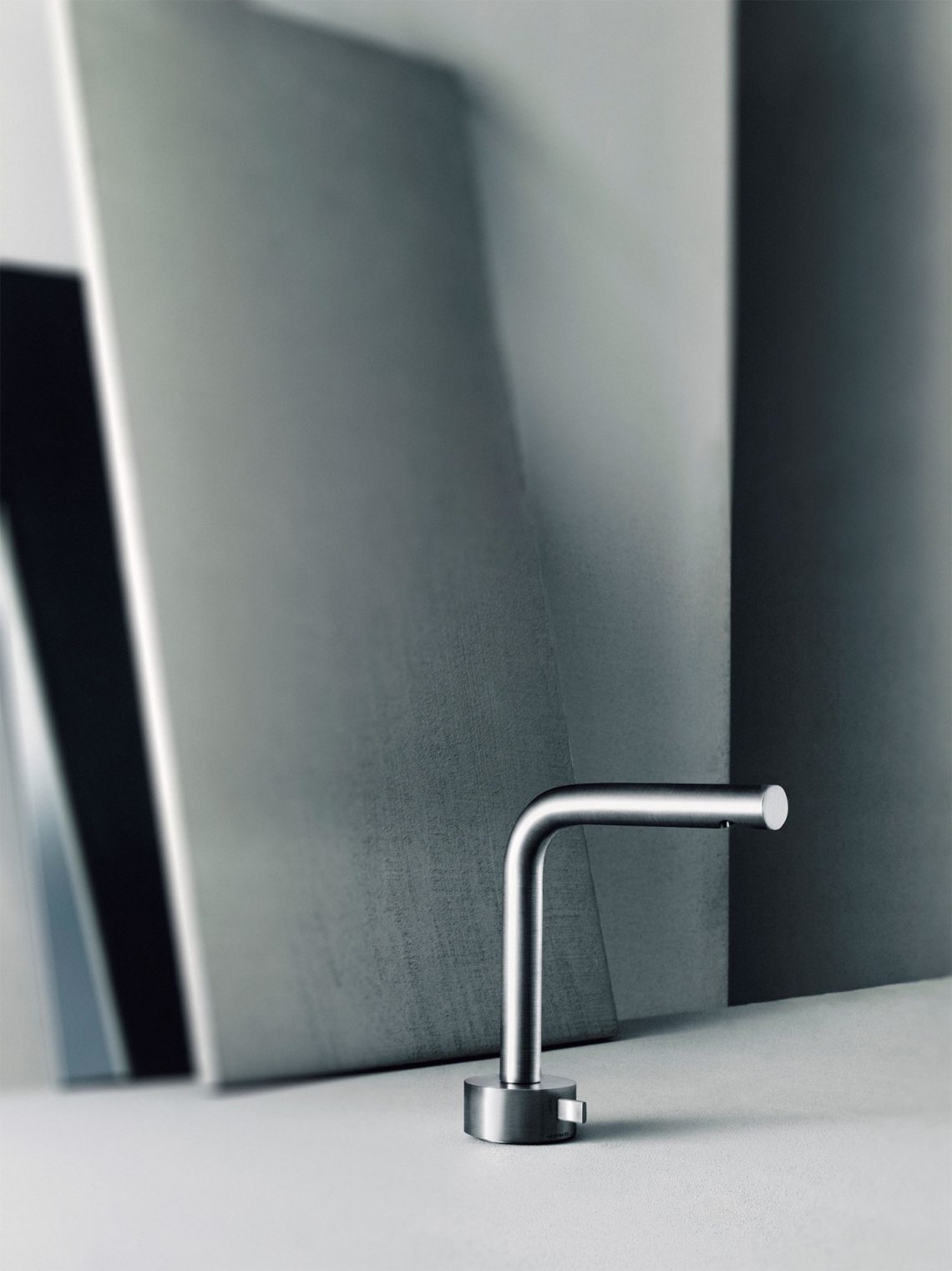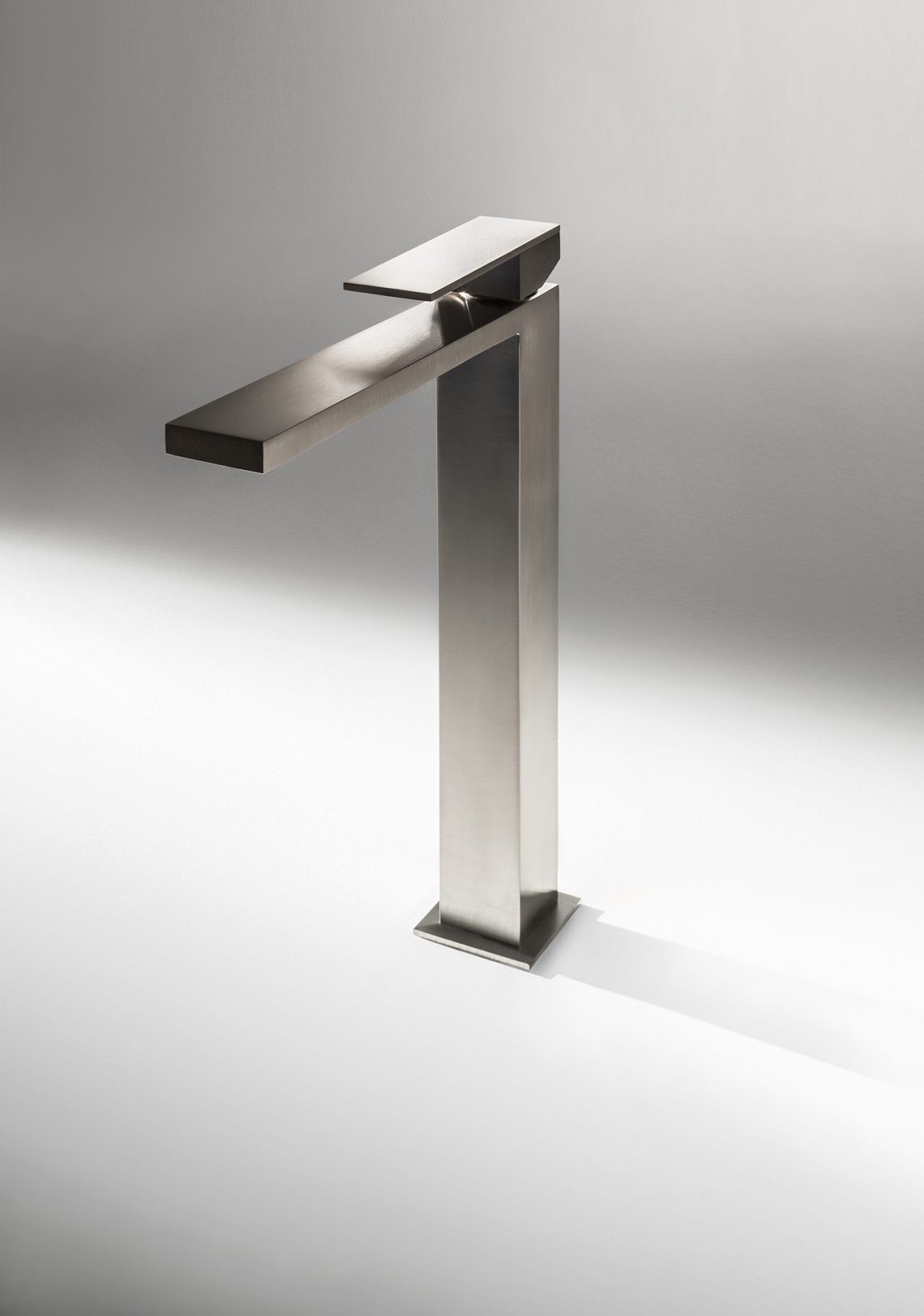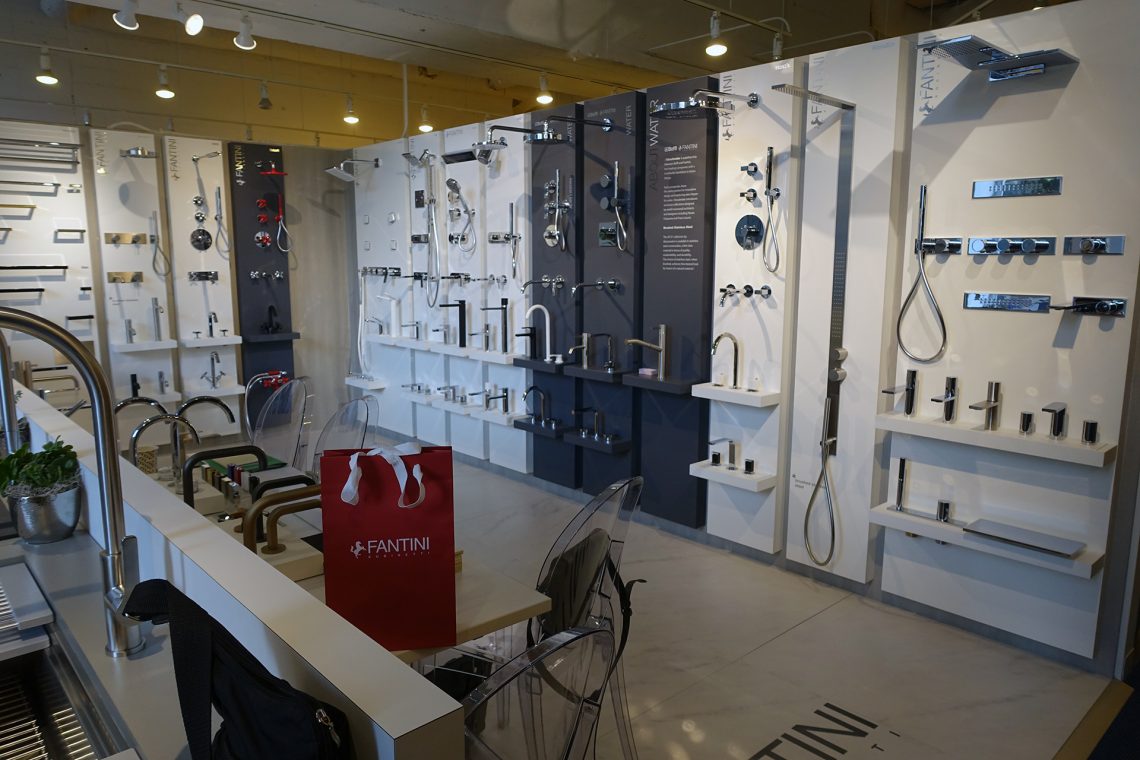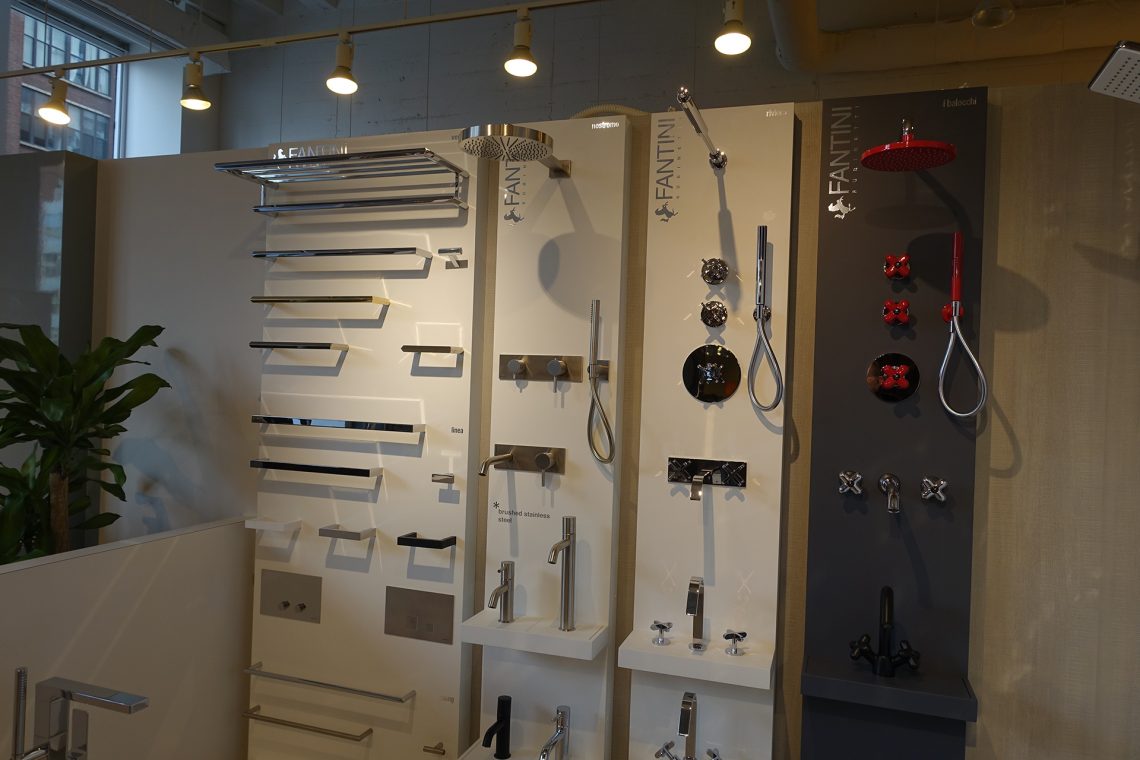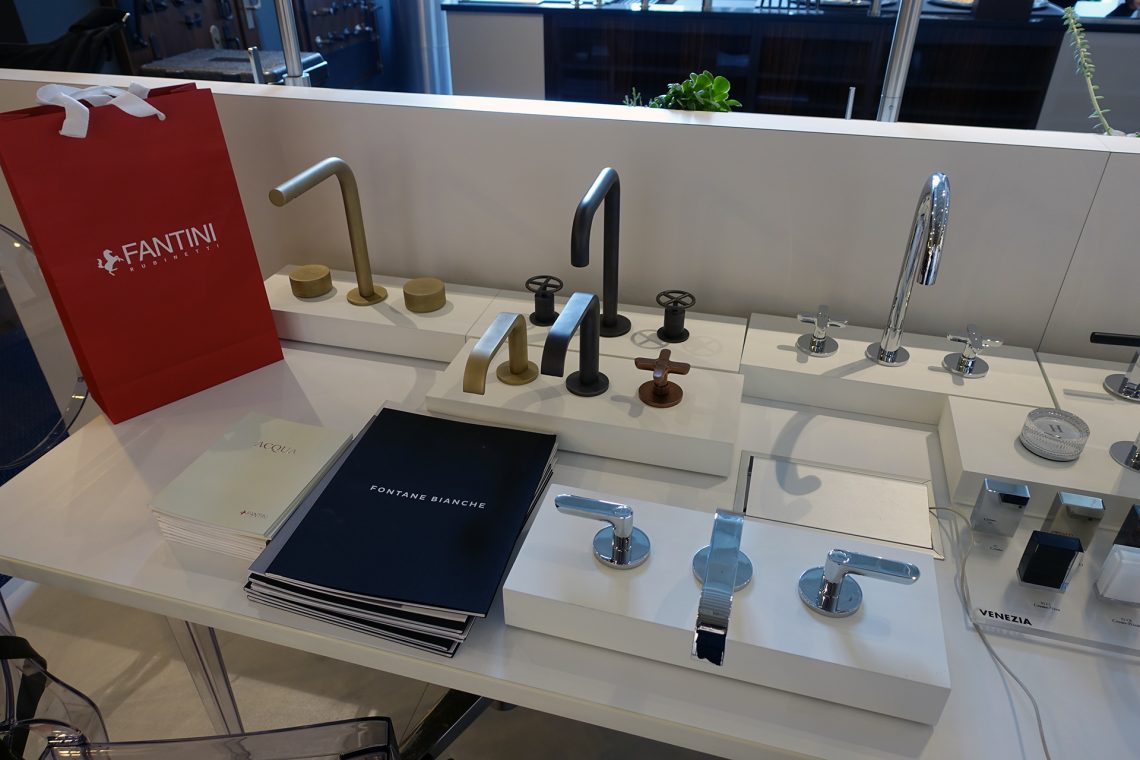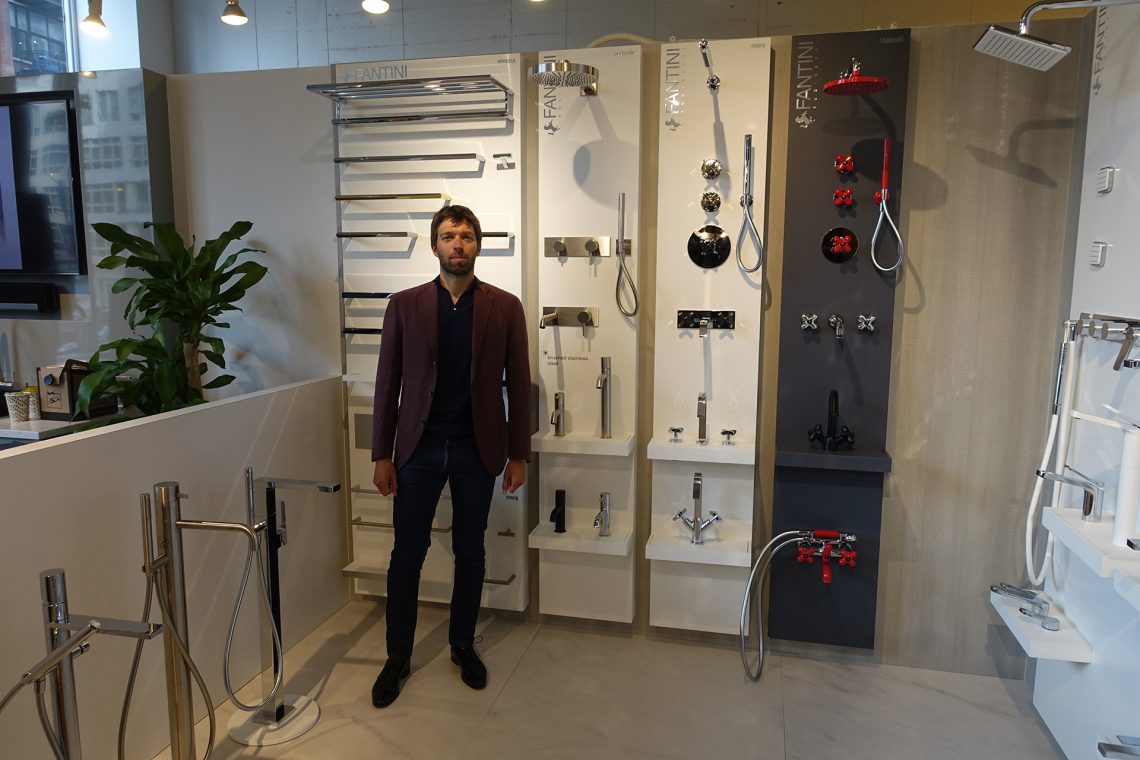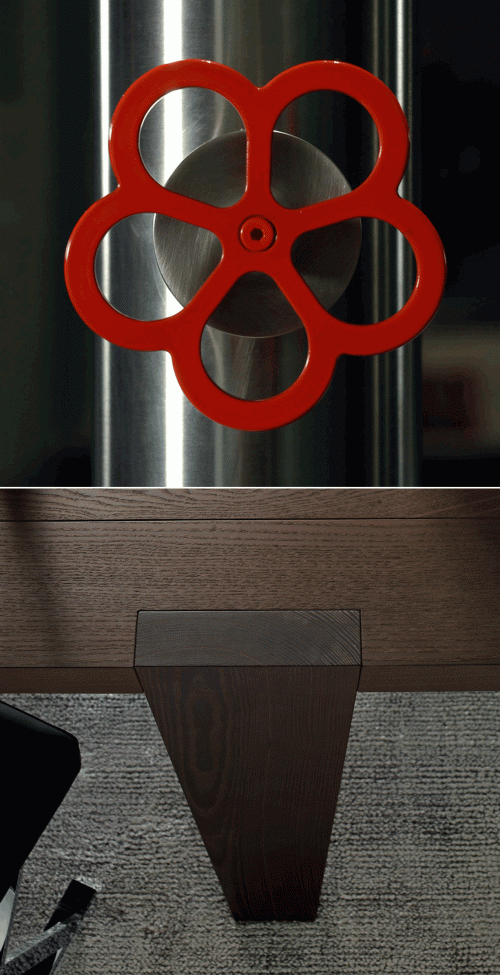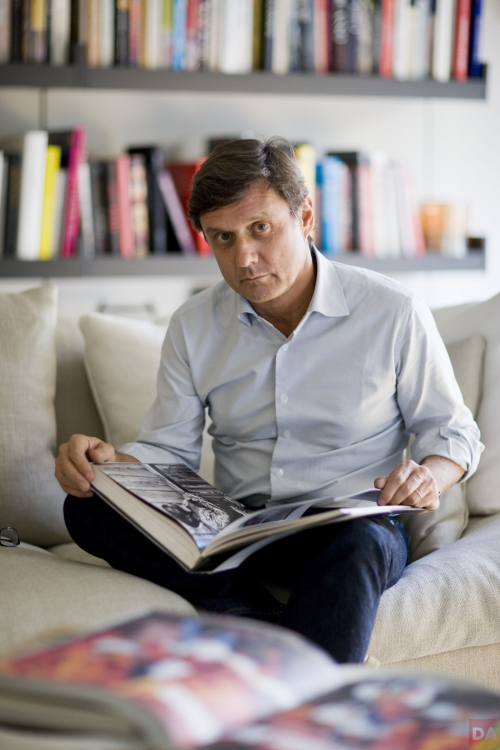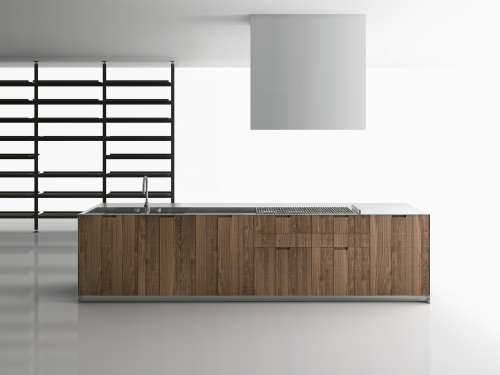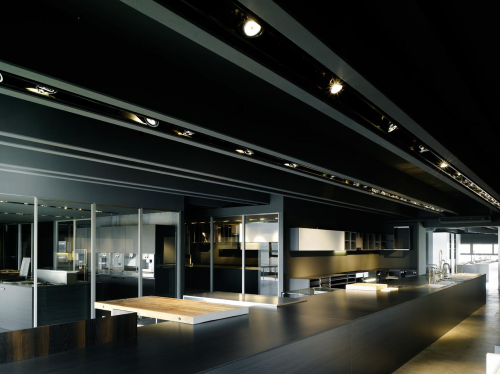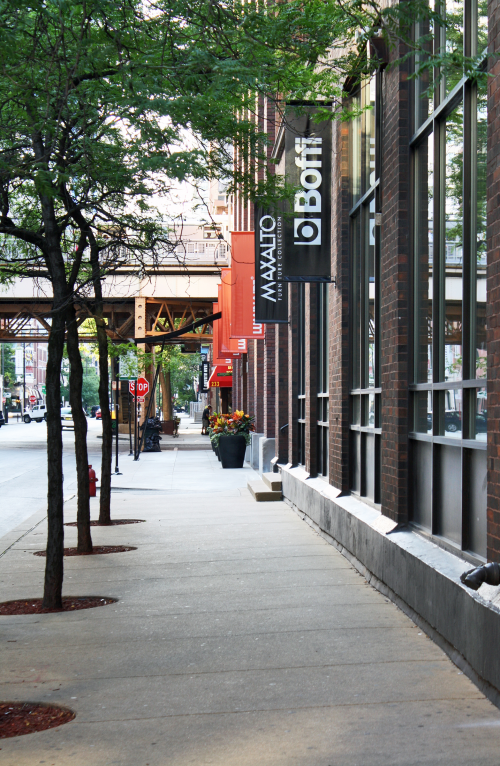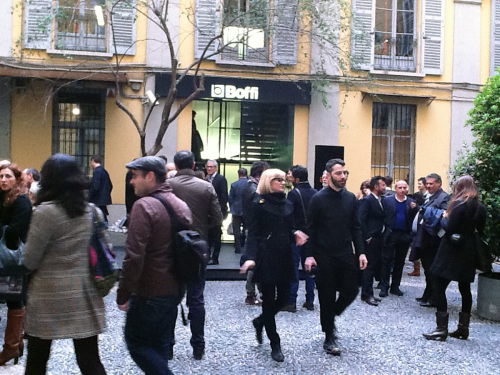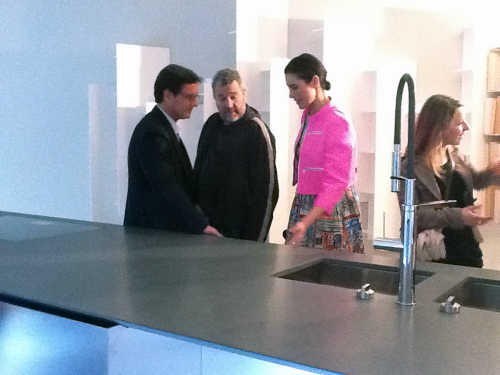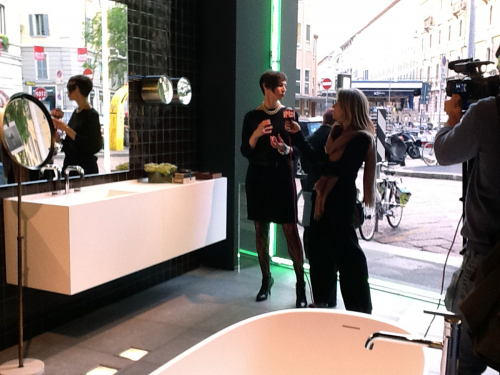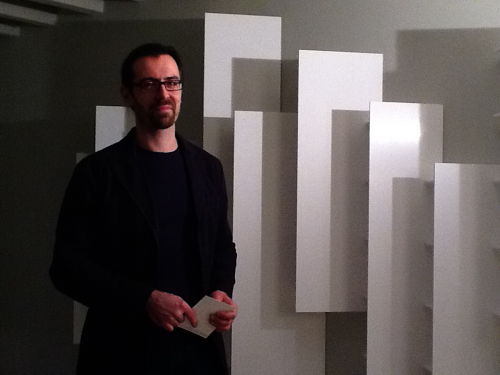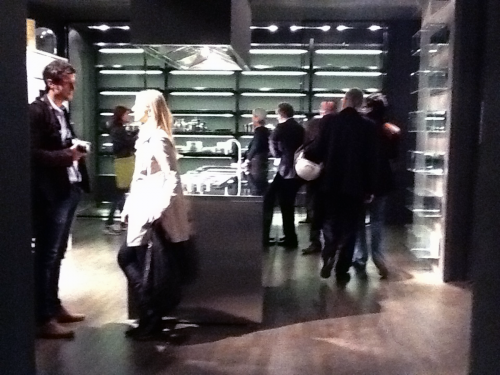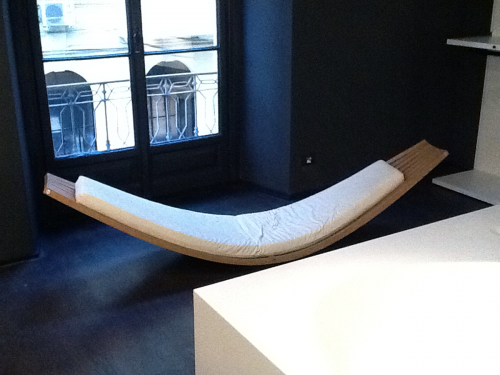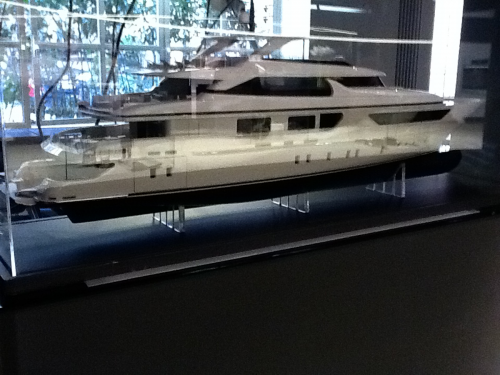 metropolitan chair. designed in 2002, best selling chair in usa today.
metropolitan chair. designed in 2002, best selling chair in usa today.
[DesignApplause] We’re at Neocon 2011 in the B&B Italia showroom and we’re talking to Jeffrey Bernett, a designer who designs many things. An aside, we just talked to designer, Todd Bracher, and Todd said to give Jeffrey a tough time.
[Jeffrey Burnett] Well, good, he and I are good friends and my comment back is I hope you gave him a harder time. We just had dinner the other night and we’ll eat again tonight. It’s nice to have a field where you can have colleagues all around the world and wherever you go you can connect through the profession.
[DA] How do you communicate?
[JB] I like email, most recently with a designer in Germany, Konstantin Grcic, who I’ve known for a long time. A number of his products for Magis are in the entryway. Also, these trade events bring a lot of clients, designers, and colleagues together so there’s the face-to-face aspect.
[DA] Where’s homebase and what’s your work environment like?
[JB] Homebase is in New York City, SoHo, for the last 15 years, a nice place to have an office. Most of the clients have showrooms nearby. I live about 15 minutes south in TriBeCa so I can walk or ride the bike.
[DA] What’s your office comprised of?
[JB] For the past number of years there have been four of us, super sharp industrial designers and once a week an administrator comes in. We stay pretty lean and mean and try to stay on the industrial side, particularly in Europe. Every once in a while marketing is part of the project.
[DA] What kinds of things to do you work on?
[JB] My first three clients were B&B Italia, Cappellini, and Boffi in Italy and I was the first American to work with them. Getting around the world and knowing that level of design-driven companies is fantastic. Seven years ago we got involved in the office furniture business in the U.S. in a major way working with Knoll to develop their largest selling task seating line. Then we developed their best selling office system. The past two years we’ve been helping realign Herman Miller’s whole office furniture portfolio. We helped coordinate all their offerings with Neocon this year.
[DA] When did the Italian connection begin?
[JB] I lived in England and went to a technical school for one year and then went back to New York. It was 1995 and I didn’t know one designer in the States. In an effort to connect with the industry I took a chance and opened up a booth at ICFF and had the good fortune of winning designer of the year. It was an editor’s award and I met many people, got connected with many well-known design journals. An Italian gentleman came up and asked me about my work, my philosophies, and he said he had an Italian company who would like to make my stuff. That man was Giulio Cappellini. He also recommended I go talk to B&B Italia. Giulio is at Neocon as a part of Cappellini’s partnership with Haworth and I took him along with some other colleagues through Herman Miller. It’s great that after 15 years this dialog still continues. Giulio opened the world of design to me and really changed my life.
[DA] You’re talking about a very elite group, talent, marketing, and manufacturing-wise. Who buys these products today? Does the Internet come into play?
[JB] That’s a good question. My experience, the last 15 years, was a time when the magazine Wallpaper hit the streets which helped sell design as a lifestyle point of view and that had an impact. Then in the last 10 years, certainly the last five, the industry has become connected within the virtual world in a very dynamic way. A next-door neighbor in SoHo is a trendcaster and though in a different industry, Coca Cola and Bacardi, for example. His research says people can act in an introverted way and the Internet allows you to connect based on your interests. And whatever that interest is, you’re connected to the world. That’s an amazing dialog and not just verbally but in a more meaningful way, even sending images. So now you have a world that’s able connect on ideas.
[DA] What’s driving your portfolio?
[JB] Our portfolio is comprised of many companies. One is B&B Italia, a company that defines quality, contemporary lifestyle and culture. There’s Herman Miller, a company that makes office systems that address every type of company you can imagine: from the leaders, the Fortune 50, to the mail-order houses, businesses you never heard of. We’ve done a lot of work for Design Within Reach which represents a price point that lives in a different market segment.
We set up our office by picking different clients in different market segments, different but complimentary. That way we give our best ideas that fit their needs. We tend to work with a client a long time. Very much like slow cooking. It takes a while to get a dialog, understand the culture of the company and help understand where you can find success together.
You’ll find this interesting: the head of design for B&B doesn’t speak much English and my Italian…but we talk to each other in the visual world, i.e., via presentation boards. And by that definition, design is that collaboration.
It’s also about partnering with good partners. For example, B&B, the technology and innovation that they developed for soft seating shifted the paradigm the same way the Aeron chair did for Herman Miller. You don’t quite realize it because the innovation is under upholstery but they changed the industry.
In 1965 a sofa took many days to make, had a wooden frame, cut foam, very much a handmade process. The goal is to use industrialization to make high quality products that are repeatable, that will last for a longer period of time. Most soft seating companies today use the technology that B&B Italia developed.
 neocon 2011 herman miller showroom
neocon 2011 herman miller showroom
[DA] Naoto Fukasawa made a point that B&B took his simple sketch concept and made it happen. Is this kind of engineering prowess typical with companies of this caliber?
[JB] B&B Italia is a very special company. When we did the Tulip Chair, our first project with them, the chair had this very thick profile of foam. I knew a little bit about their technology and being a first project I didn’t want to push too hard. It was a relatively natural convergence of knowledge and worked out well.
The second project with B&B Italia was a chaise lounge called the Landscape which is on the cover of The Daily today. B&B had never worked with a 30 mil profile over that expanded distance, so that was something I actually pushed B&B with. At the time they were really residential but were wanting to make this chaise contract. Now they’re about 50-50 residential and contract which is their bullseye. We worked about six months on the chaise when we found out it wasn’t working. They gave us three days to make it work for them and it has become one of their most successful icons.
Our solutions are not just about engaging aesthetics but also about ergonomics. For me when you sit on the couch it has to perform as expected or better. The Landscape was a little different and reading is different than napping. You need an adjustable head support and the people are different sizes. So we changed the nylon support straps to thin flexible sheet metal and then added magnets to the headrest which could then move infinitely. We also use this design in the Metropolitan chairs.
Being in America I can’t be at a European factory all the time and B&B is absolutely the one company in our portfolio that if I can’t be there and they want to go in this or that direction, I don’t ever question the results that come out because I know it will always be perfect. There’s a complete trust when we work with someone on the other side of the table. Citterio does the same thing.
When we work with some of our other clients we have to be much more involved. Our office is can produce 3D modeling and can follow the package all the way through tooling.
[DA] The Metropolitan chair you said was launched in 2002. I was told that’s the best selling chair in America.
[JB] The Metropolitan family is going on 10 years and that’s the long-term strategy I’ve pushed with them so we have products that continue to grow and do well over an extended period of time. The Metropolitan and Tulip are the most successful for B&B Italia and they perform differently.
 jeffrey bernett in the chicago b&b italia showroom mugging it
jeffrey bernett in the chicago b&b italia showroom mugging it
in his metropolitan chair. image captured with brand new ipad2. just saying.
When we work on two lounge chairs we’re concerned with what problems we’re solving and how people will use them. We want the chairs to be complementary in their use satisfying different needs for different people. If you walk into the showroom and there’s a Fukasawa product and one of ours you have choices, good choices for different reasons that fit your needs. We’re looking to engage your spirit if you will, to fall in love. So an emotional part of the program exists with how the product performs.
[DA] Well, congratulations on the large scale successes of your efforts. Here’s a question that was inspired going to Miami last December. We were exposed to 10 exciting design galleries and briefly talked with Ron Arad, Wendell Castle, and Konstantin and I’m wondering, do you get involved in limited edition work?
[JB] I haven’t done too much. A little for Moss in New York over the years. We did a project that was part of a fundraiser a year ago. We did something for Herman Miller in Japan for an initiative of theirs. But really have not done much edition work to date.
Not for the reason that maybe we didn’t have the time or took the time to figure out what we would do. If I stepped into that world I wouldn’t want to do just one thing but think about it strategically over an expanded landscape and an expanded period of time.
But it’s an interesting world and I look at them as complimentary and your thinking about problems a little bit differently when your thinking about industrial production versus making shorter run editions. And there are many interesting galleries that push those boundaries. Gallerie Kreo in Paris is always consistent. The Bouroullec’s have done a lot of really nice work. For Ron (Arad) it’s a big part of his business, probably half of his work lives in that realm.
Design is this wonderfully faceted stone, there’s no one right or wrong way to do it. And when you look at the auctions in the last five years, design has interestingly continued to grow in a positive way. Marc Newson’s stuff for the Gagosian Gallery was hugely successful.
[DA] I was surprised to learn recently that the design gallery business model is nearly 30 years old. Is the design gallery being promoted more today?
[JB] I was quite pleased, particularly in America when Art Basel decided to go to Miami and I thought that bridge of contemporary culture lived a little bit stronger in Europe. Coming to America, in New York we have Chelsey which is one of the more interesting art cities in the world, but bringing it to Miami exposed it to a larger group.
And for sure in the last seven or eight years that side of design and collectible domestic objects has become a very interesting arena for a lot of people to participate in. In contemporary art on the same basis, particularly in America, they can become complementary to thinking about how you go through life collecting things and what’s important and how some of the things might resonate with you.
Europe has always had the benefit of having a B&B Italia where quality and craftsmanship are paramount. In America we have industrialized production and artists are very good at getting things made but how that bridges into the design world has been a little harder. If you’re going to step into that world you need to execute (the production) at the highest level because it’s going to be scrutinized at that level.
[RK] Jeffrey, who or what inspires you?
[JB] I’ve been here a week and I went into Millennium Park and saw “The Bean.” Amish Kapor is one of the leading contemporary artists in the world, a very articulate speaker and thinker and that piece appeals to everyone, like the Jeff Koons “Puppy.” Watching people respond to The Bean, being mesmerized is very wonderful. I went to Holland and saw the tulips. The Tulip chair was inspired by the tulip flowers.
I like to go to contemporary art fairs to see what’s going on and that experience may alter my thought process. We’re social beings, so getting together with people, particularly in this field and sharing ideas and talking. This all inspires us to think about life or good problems to solve. So inspiration comes from a lot of different things.
I’m thinking of the first piece of furniture I bought was in college and I didn’t grow up in a house where the furniture had names. I was walking down the street and saw this chaise and it represented industrial art for me. I knew how to weld and bend tube for motor sports but this was so beautiful. So I went in and found out the chaise was by a French architect, Le Corbusier, and saw how it could change seating positions, the adjustable headrest, the suspended straps, really hit a button. And this was a vintage store, nothing was new, it was used, and it was expensive. I was with my college roommate and I said “I have to have it.” and he said “are you out of your mind? This is like three months rent.” But that day the piece hit me in the heart, the emotional connection so that was the first thing I bought.
It’s inspiring how some weird things come together and how old and new combine. And also the ability to look, it’s a lifetime of looking at the world of common things or just slightly unusual things just to find something interesting or provocative.
[DA] Maggie Peterson, who’s also present, reminds us the bean is named “Cloud Gate.” What are some of the characteristics of your work?
[JB] Looking back at our projects through the years, it’s picking clients who share with you common values. So you don’t have to push a client where they might not belong but rather it’s a mutual journey. With B&B it’s very simple. I draw a circle and divide it into three pieces and say there is functionality, it has to perform well; it has to be a good value, money-wise; and aesthetics, why are you drawn to it?
And when I think about B&B Italia I think of the architectural envelope and that’s a pretty sophisticated balancing of a lot of pieces to a puzzle. How the people relate to the product, how the furniture lives together in a harmonious environment. We never get our solutions by adding things but rather via a pure sense: what problems we’re trying to solve and how adaptable does the product have to be.
As a nationally ranked junior athlete, sports was where I learned my value set, a passion for the pursuit of excellence. As Mies said, the difference between good and great can be that last 10%. So when B&B asked me to do a chaise, Rolando, who works on the R&D side, in his infinite way said “we don’t have one and we want you to do one.” And then he said, “remember Mies, Eames, Corbusier, they all did chaises. Rolando’s challenge is always there and it’s like sports, and I’m able to jump off the highest cliff for better or worse. The guy who inspired me with the chaise, Le Corbusier, led me to visit his architecture to look at the poetry of his chapel in Ronchamp to find the line that made it look elegant.
Further removed from the product itself are other details to think about. When Luminaire received a Metropolitan chair, Nasir said that a leg was damaged when the chair was dropped off the truck. As a result we redesigned the packaging. As you know, a customer orders an object and it takes a long time and if the piece is damaged they have to wait again. It’s all in the details, how many steps can you think through, how many things can you anticipate. Hopefully you can solve the problem up front.
[DA] So before sports sucked up most of your spare time you were building soapbox cars? So product designers, is that their ilk?
[JB] I think sculptors and product designers and architects all think three-dimensionally, and if that’s a part of you and you don’t do that you can feel unfulfilled. I think product designers are good at tinkering with things.
[DA] Well yes, there’s the need to visualize and the gift of 3D visualization. I had a client who created this probe that could inspect the inside of tube-shaped structures. Of interest, he couldn’t visualize his own creation and needed a perspective graphic drawing to see it. Here’s that tough question we (and Todd) promised you. We’re in your client’s showroom, at Neocon. Are there too many products out there?
[JB] I think there’s always room for good products. We like products that last a long time and don’t like to contribute to products that have fast-term consumption cycles. And we live in a world where that has continued to happen.
One thing I can always say about B&B Italia, they make a quality product. And you have the Eames Aluminum Group and the Coca Cola Emeco chair, using the plastic from recycled bottles, isn’t that the most sustainable stories you can probably tell? And there is always room for good ideas. As long as we are challenging ourselves to find out what they are. Does the world need another chair? Maybe not. But if the chair is a better chair, if it does something in a more intelligent way, that’s good.
We live in America, a country that loves commerce. I wish we’d just mandate recycling. We would then see a new level of efficiency and teach us how we use resources. Government’s role is supposed to help us do things that might not be economically viable in a fast ROI point of view, maybe a little bit like healthcare too.
Government should also be put in a context to help us think long-term about the whole sustainable side: how we think about not only recycling, but reusing and repurposing. We’re barely scratching the surface here. I give credit to the architects and interior designers who push LEED. This effort pushes clients and property developers to think about what their making.
[DA] We’re all becoming aware of limited resources and sustainability. I just saw a disposable cardboard memory stick. What’s your thoughts on more disposable products?
[JB] When you think about a product’s lifespan, for some items it makes a lot of sense. Disposable is all right if we think clearly about what that means on the backside. The landfill model is not a good model.
[DA] How does your work represent your philosophy on the state of design?
[JB] We definitely try and take a long-term approach to our product design, not just a fashion hit for today. When we get involved we really like to help businesses grow, a growth over a long period of time. It’s a very collaborative business. Helping people stay in business is a big part of what we like to do.
Philosophically, fundamentally we try not to do things that are trendy or fashionable, that are gone tomorrow. It’s easy to make things look interesting which might get a lot of attention. We feel people need to like the product and use the product. How much does it solve a problem, how much do they appreciate using it? That’s a true test of time, not necessarily how much ink something gets.
[DA] What part of what you do satisfies you the most?
[JB] Probably just like you, I need to do something three dimensionally. Generally when we work on projects I don’t get to solutions by a whimsical sketch. I think through most of it in my head. Then a sketch articulates before we use the software to create a 3-D data-set. The process is partly a puzzle, partly a rubics cube, there are many sides to address for to create a product that will enter the market that will do quite well.
Probably the nicest story I ever had and bittersweet at the same time. B&B Italia has provided me many opportunities to travel around the world. A couple years ago I went to Sidney Australia visiting a dealer, possibly the largest showroom in the world with regards to the floorplate. The showroom manager said that the Metropolitan chair was not on premise because something unusual took place.
A customer came in and spent many hours sitting in one chair than another. At some point he says the Metropolitan Hiback was the most comfortable chair he has ever sat in and wanted to know the process of getting one. The showroom manager told him typically fabrics are chosen and a chair is made, in other words several weeks to get the chair. The man who was in his late 70s said he has had a good life but he has terminal cancer and maybe three months to live. The showroom manager made the decision the chair went out of the showroom with the man. We don’t normally think about how design touches people’s lives, but for this man and that chair, coming home was a huge step in the quality of his life and how he was going to spend some of his time.
[DA] An inspiring story Jeffrey. Last question. What’s next?
[JB] We’re always working, things are pretty seamless and we continue to work with our group of clients. I’m going to Italy soon. We’re working with Herman Miller on several things for the past two years.
Since we’re always busy we look for creative diversions. Several of my partners are here at Neocon and we’ve been going to the museums. These diversions help us focus and relax at the same time. And now we’re ready for a break because the months of April, May and June, there is the Saloni, the ICFF, and Neocon, and I call it the triple crown because the deliverables never stop.
[DA] I have just one more question. I am reminded that you won a designer of the year award, you’re a very recognized and accomplished designer. Does the head get in the way of your design solutions?
[JB] For me I guess that sports have been a great background. In the world of sports hype doesn’t matter, it’s the time on the clock. And I guess I tend to be the quiet American, I sit a little bit more in the background. I’m happy to talk about design, the thinking and problem solving.
But I generally don’t do much talking unless it’s tied to the clients that I care about. I essentially am driven to solve good problems and that may be my balance and focus. I do enjoy hearing about the stories where we have done a good job. The nice thing about product design, you can let the work stand out on its own, and the work gets a lot of the attention.
[ Bernett background ]
In September of 1995, Jeffrey Bernett founded his New York-based multi-disciplinary design consultancy. At the May 1996 International Contemporary Furniture Fair (ICFF) in New York City, Bernett presented his first collection, which was awarded the 1996 Editorʼs Award for “Best of Show”. Bernett continues to work in many areas – residential and office furniture, household products, lighting, transportation design, graphic design, packaging and bottle design, environment and interior architecture, and strategic planning – winning numerous design awards along the way. In the emerging global market for design, Bernett has often been the first American chosen to work with several of his European clients. A partial list of clients includes B&B Italia, Bernhardt, Boeing, Boffi, Cappellini, Conde Nast, DWR/Design Within Reach, Herman Miller, Knoll, Ligne Roset, LʼOreal, Mercedes Benz and Northwest Airlines. Bernett holds numerous patents, is regularly featured in design publications from around the world, and also is a frequent lecturer at design schools and events globally.
[ consultants for design strategy ]





